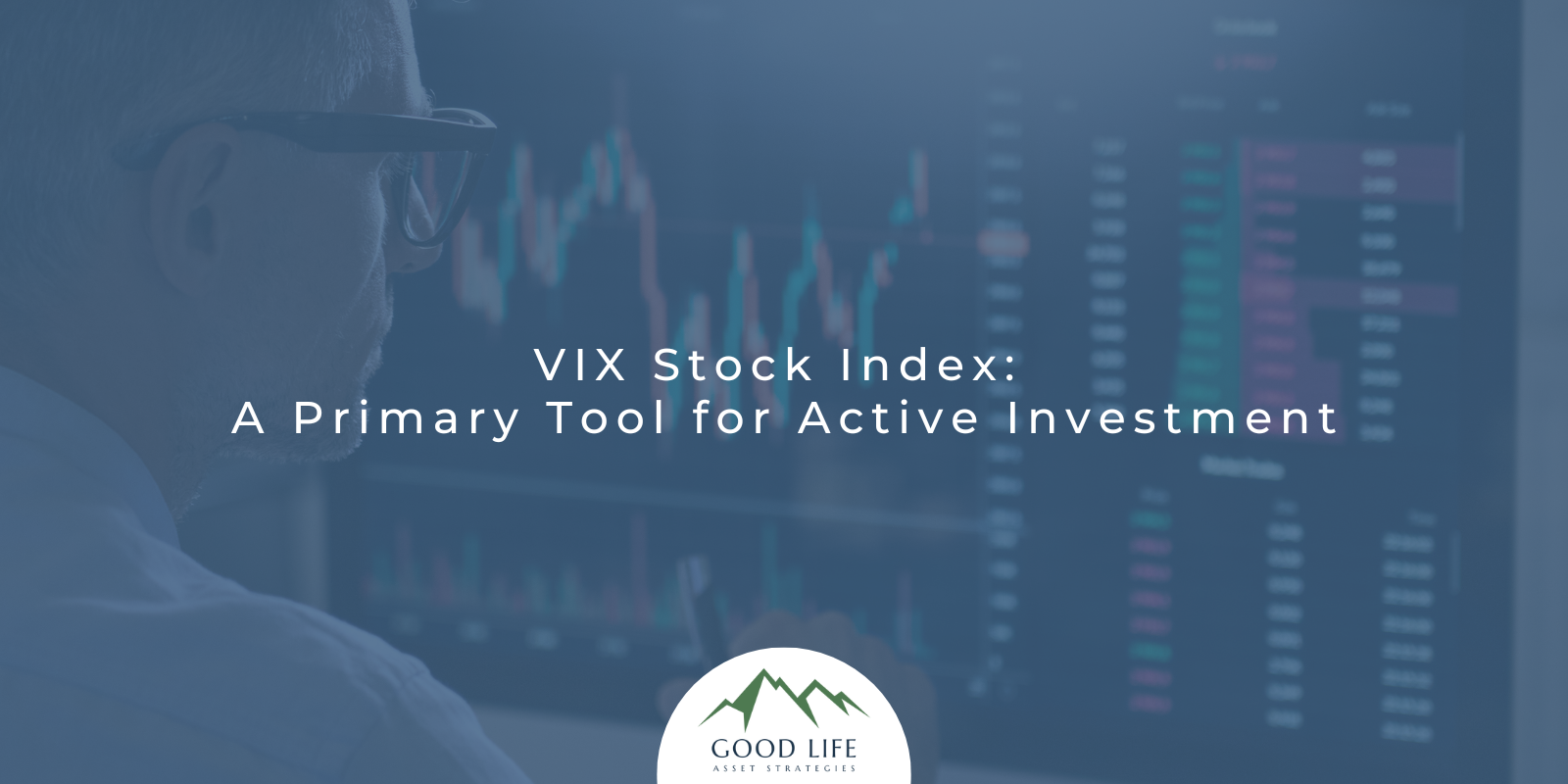- 817-864-8560
- justin@g-las.com
- Mon - Fri: 9:00am - 5:00pm

In my proprietary active investment strategies, I’m always looking for an edge. The Cboe Volatility Index, or VIX stock index, provides one of those edges. It is by far one of my favorite benchmarks. I use it to be informed about when the stock market is overbought or oversold, which allows me to trade accordingly.
In simplest terms, the VIX is used to measure the anticipated volatility of the S&P 500 index over the coming month. Typically, the VIX runs counter to the S&P. A falling VIX usually means higher stock prices, while a rising VIX indicates a price drop.
The VIX ranges from 10 to around 90 (very rare), with an average of 20. Generally, a VIX reading of less than 15 indicates traders are optimistic about the stock market, with nothing on the horizon to fear.
A VIX level between 15 and 25 is a typical trading environment, indicating some fear about the immediate future for stocks but nothing to get too worked up about.
A rating between 25 and 30 indicates you should return to your seat and buckle up. The ride is getting bumpy.
Between 30 and 35 screams ‘worry’ as traders sit in front of their computers all day trying to keep their hair from catching fire. Anything over 35 has folks losing their minds.
I’ve lived through several 80-plus VIX days, including the 2008 financial crisis and the COVID debacle. For the unprepared, these ratings can be a nightmare.
Since it’s an index and not an exchange-traded fund (ETF), investors can’t buy the VIX stock directly. Several ETFs and ETNs advertise they track the VIX. I would argue they do a poor job of tracking, but satisfy most of my purposes. My favorites are the Ipath VIX Short-Term Futures (VXX) and the ProShares VIX Short-Term Futures (VIXY), but only for very short-term trades.
I have devised several strategies to profit from extreme readings in the VIX, but they are not for the novice or the faint of heart. Trading VIX stock instruments carries lots of risk, and only the most seasoned veterans should trade at this level. It would be like a student driver hopping behind the wheel of a Ferrari. A crash is imminent. But for the astute trader who can time the market, the returns can be lucrative.
One of the simplest ways to trade the VXX or VIXY is to buy it during extremely low volatility when the VIX is exhausted and finds support in the short-term. I use twelve technical indicators to let me know when the risk is worth the reward on making a purchase. Timing is everything in this type of trade and should only be short-term because these ETFs are slowly moving toward $0 over time.
I have found other ways to profit during extremely high and low VIX readings outside of trading the VIX ETF instruments. For those of you who like trading options and have experience managing risk, one of the strategies I’ve found profitable is to sell Deep Out-Of-The-Money Put Options in the SPDR S&P 500 ETF Trust (SPY) or the Invesco QQQ Trust (QQQ) when the VIX is above 28. A 28-plus reading seldom occurs, only once this year, but when it does, the trade works quite remarkably. Again, trading options, especially selling, is a high-risk/high-reward venture to be performed only by the most experienced option professionals.
Feel free to reach out if you would like to discuss trading strategies around the VIX stock index or inquire about any of our other active investment strategies.
The views expressed represent the opinion of Good Life Asset Strategies, LLC. The views are subject to change and are not intended as a forecast or guarantee of future results. This material is for informational purposes only. It does not constitute investment advice and is not intended as an endorsement of any specific investment. Stated information is derived from proprietary and nonproprietary sources that have not been independently verified for accuracy or completeness.
Good Life Asset Strategies, LLC is a registered investment advisor located in Fort Worth, Texas. Good Life Asset Strategies, LLC and its representatives are in compliance with the current registration and notice filing requirements imposed upon registered investment advisors by those states within which the firm maintains clients.
All information herein has been prepared solely for informational purposes, and it is not an offer to buy or sell, or a solicitation of an offer to buy or sell any security or instrument or to participate in any particular trading strategy. Such an offer can only be made in the states that Good Life Asset Strategies, LLC is either registered or a notice filer or an exemption from registration is available under the securities laws or other laws.
Certified Financial Planner Board of Standards, Inc. (CFP Board) owns the CFP® certification mark, the CERTIFIED FINANCIAL PLANNER™ certification mark, and the CFP® certification mark (with plaque design) logo in the United States, which it authorizes use of by individuals who successfully complete CFP Board’s initial and ongoing certification requirements.